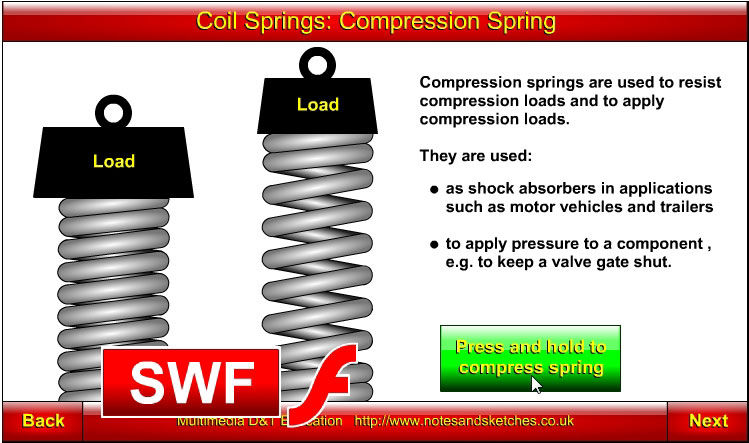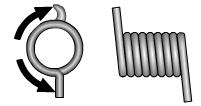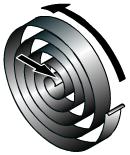 |
||||||||||||
Click on the screenshot above to view the "Springs" animation by Laszlo Lipot |
||||||||||||
|
||||||||||||
Springs can be squashed, pulled and twisted and will return to their original form when the pressure is removed. Energy is required to deform springs. This energy is stored as potential energy and is released as kinetic energy. Springs are made from “springy” materials that:
Materials used for springsMaterials used for springs include:
|
||||||||||||
| Click here to view the PDF version of this resource. | 
|
 |
||||||||||




